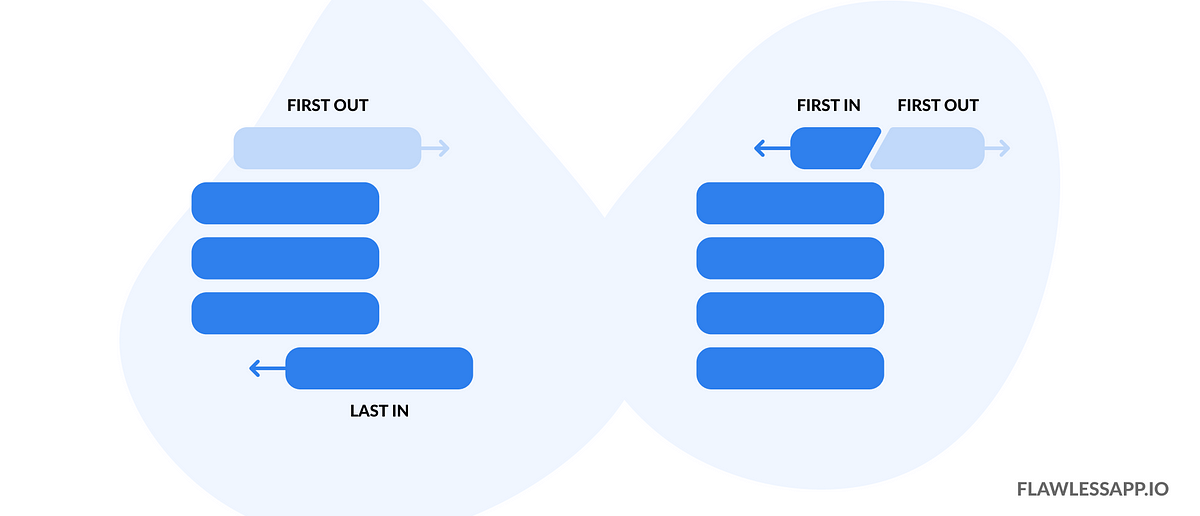I believe the best way to learn a language is to implement data structures. Below is my attempt to implement stack and queue in swift with generics.
Here are the reason why I used LinkedList and Generics.
- Generics helps us to use the data-structure with different data types as it is not tied to one data type.
- LinkedList implementation saves memory as compared to using array for stack implementation.
Queue Implementation with Generics
We start by implementing class Node which has two properties value and next . Queue works on concept of first in first out (FIFO). Queue basically have two methods
1 Enqueue: This method add new nodes at the back of the list.
2. Dequeue: This method removes node from the beginning of the list.
class Node<T> {
var value:T
var next:Node?
init(value:T) {
self.value = value
}
}
class Queue<T> {
var tail:Node<T>?
var head:Node<T>?
var count:Int = 0
func dequeue () -> Node<T>? {
if let node = head {
head = head?.next
count -= 1
return node
}
return nil
}
func enqueue(value:T) {
let newNode = Node(value:value)
if let tailNode = tail {
tailNode.next = newNode
newNode.next = nil
tail = newNode
} else {
head = newNode
tail = newNode
}
count += 1
}
}
#linked-list-with-generics #swift #stack #data-structures #queue #data analysis

1.70 GEEK